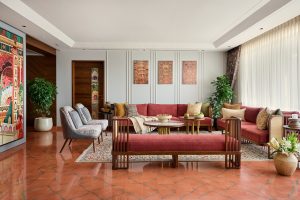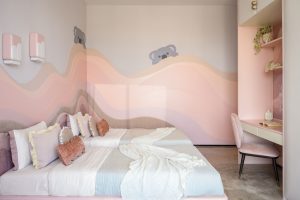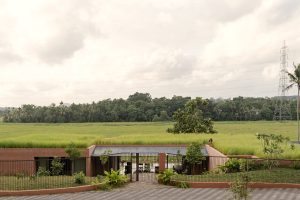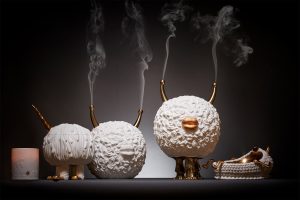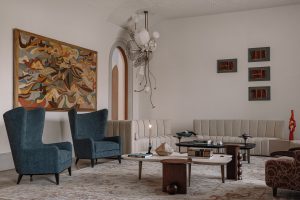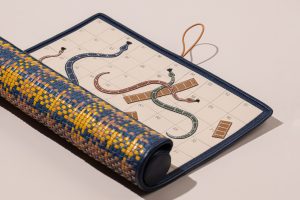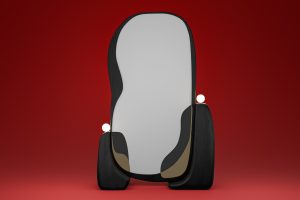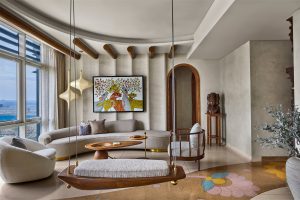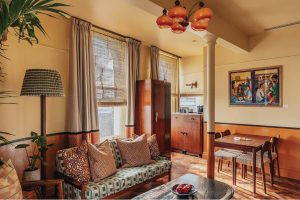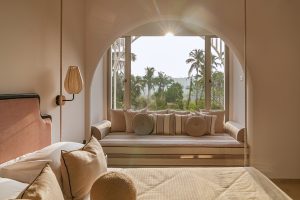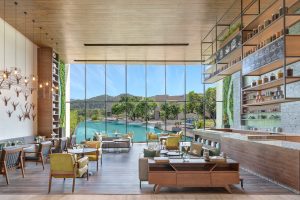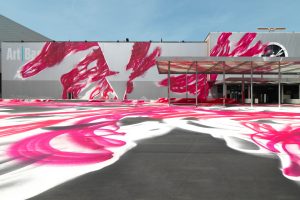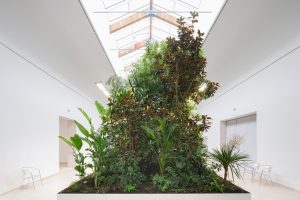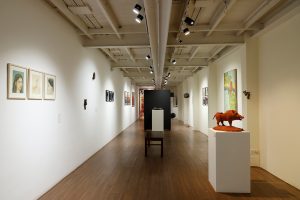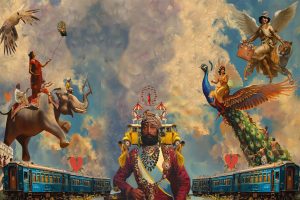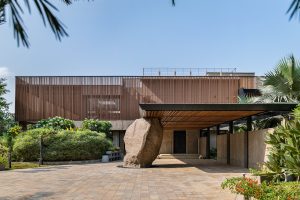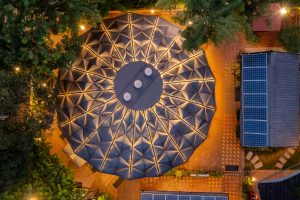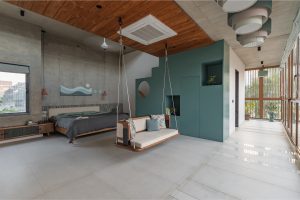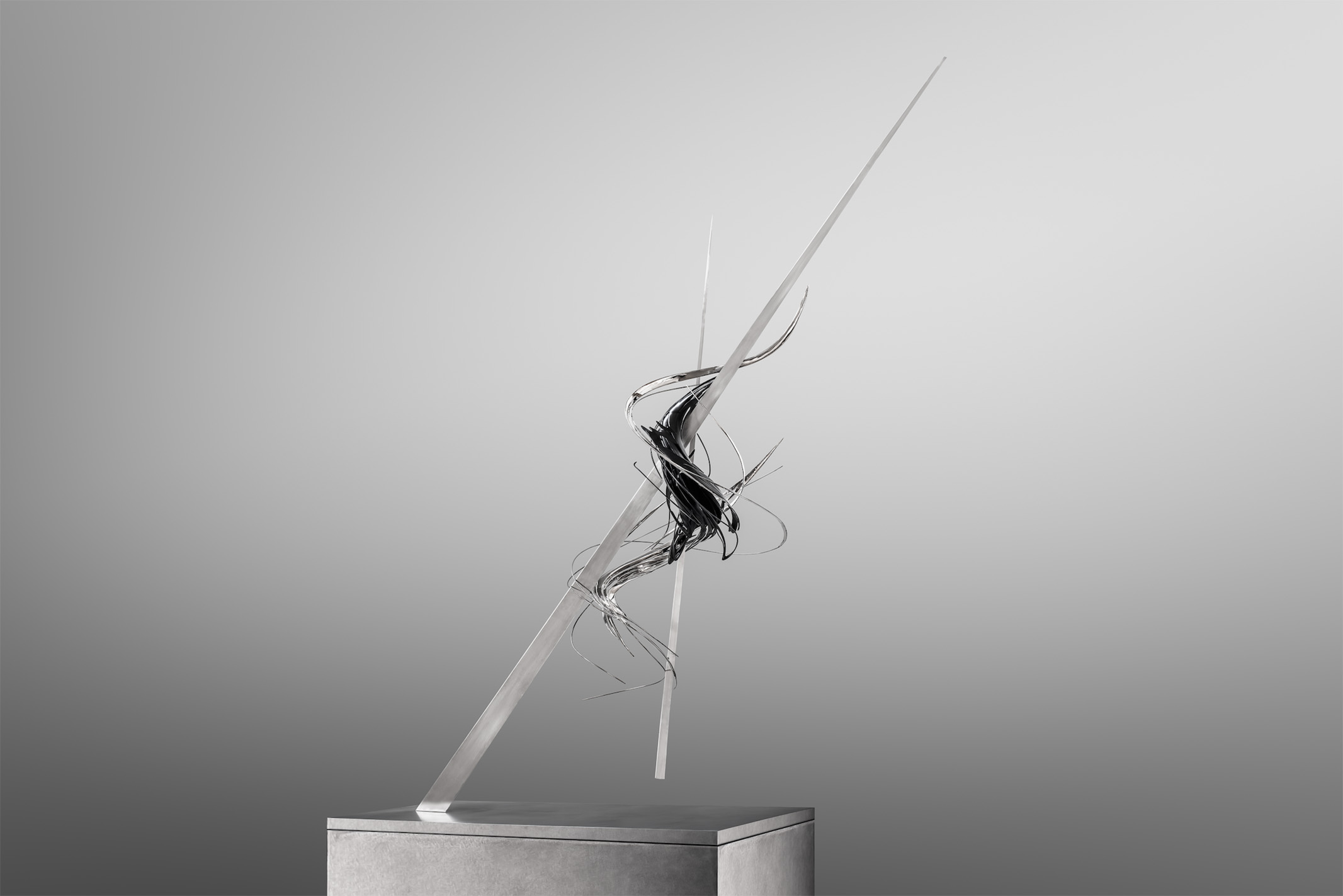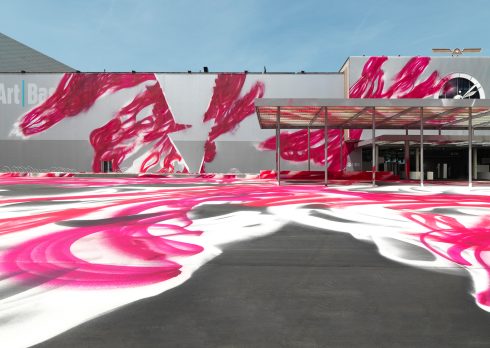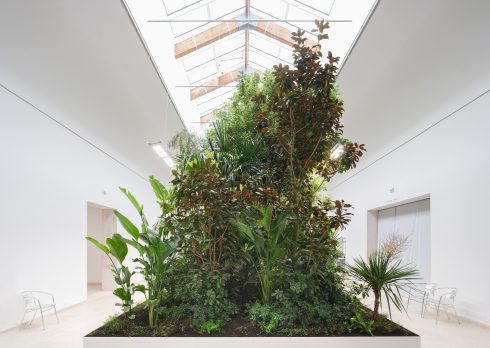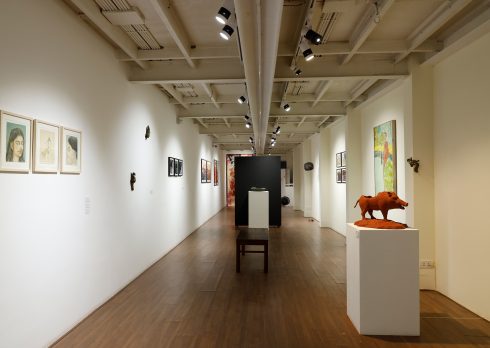The Artist Behind Amorphous Stainless Sculptures Making Waves Online, In Conversation With Zheng Lu
Inspired by the ancient art of Chinese calligraphy and the shape of water, contemporary artist Zheng Lu sculpts stunning forms by balancing technique and ancient philosophy.
- 14 Aug '24
- 10:25 am by Manisha AR
Water and metal in the hands of refined artists can take any shape or form. In his first solo exhibition in New York last month, metal sculptor and fine artist Zheng Lu presented a series of works that evoke the cresting and nadir of water. Known for his technically ambitious and exquisitely crafted sculptures, Lu brings a fascinating new depth to sculptural art. Made of stainless steel and inspired by the ancient art of Chinese calligraphy, his sculptures at ‘The Dark Matter in Sagittarius’ at Sundaram Tagore Gallery garnered a lot of attention on social media. The artist believes that balance is inherent in the world around us, it is an inescapable fact that he embraces in his work and way of living. Lu’s artistic creativity often stems from this belief and translates into his art process. Each interaction with material or machine grows his artwork until it is displayed at an exhibition or installed in a public space.
Born into a literary family in Inner Mongolia, China, Lu currently lives in Beijing. Before his show at the Sundaram Tagore Gallery in Chelsea, he worked on a massive 20-foot-tall steel sculpture adjacent to the United Nations Office in Manhattan last year. A graduate of Lu Xun Fine Art Academy, Shenyang and Central Academy of Fine Arts, Beijing, with additional training at École Nationale Supérieure des Beaux-arts in Paris, Lu’s art has graced major venues including the National Museum of China, Long Museum, and Musée Océanographique. As he embarks on his largest installation yet in Hong Kong, DP delves into Lu’s innovative approach to metal sculpture.
Also read: New Art Installations To See In Paris During The Olympic And Paralympic Games 2024
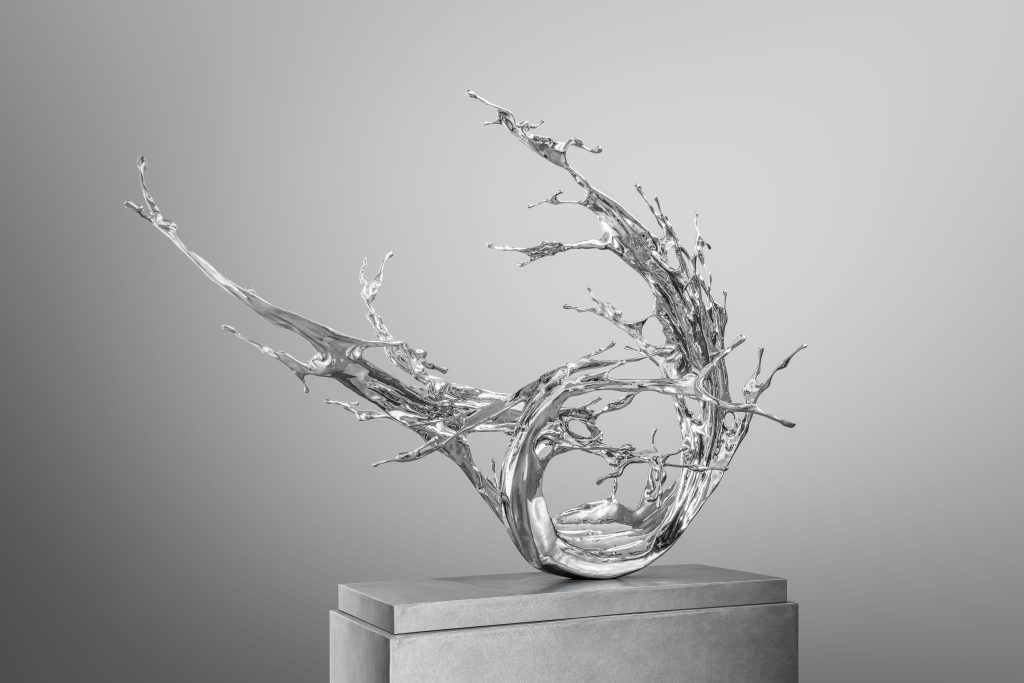
Water in Dripping – Grace, 2024, Stainless steel by Zheng Lu, (Image courtesy of Sundaram Tagore Gallery)
Design Pataki: When and how did your journey with sculptures begin?
ZL: My study of sculpture began during university, which was heavily influenced by classical realism. While I acknowledge the discipline and attention to detail that comes with classical training, this habitual thinking gradually confined my creativity within representational boundaries. In 2006, I was awarded the Young Artist Prize by LV, which allowed me to study in Paris for three months. This period was transformative, as it challenged my perception of classical art and prompted me to reflect deeply on my creative process. Upon returning to Beijing, I embarked on a series of entirely new creations, using metal as my primary medium.
DP: Can you take me through the vision and underlying themes of the exhibition “The Dark Matter in Sagittarius” and the decision to include ‘Colosseum II’?
ZL: I am a Sagittarius, and “Dark Matter” refers to the depths of my inner self. The exhibition is named after this concept and serves as a process of self-analysis. From my early fluid works to the latest ‘Colosseum,’ the exhibition traces my creative journey over the past twenty years. The ‘Colosseum’ piece is inspired by a significant aspect of my life: models. I am obsessed with models and the condensed nature of objects. I believe that models, like poetry, condense information to a high degree. In this process of compressing a distance of 30,000 kilometres into a small space, I gradually disappear, blurring the line between the viewer and the viewed. The compression of space and the displacement of scale provide an observation angle detached from reality. Therefore, the ‘Colosseum’ is not just an arena but also a realm for imaginative participation.
Also read: Shezad Dawood & Priya Ahluwalia’s Eloquent Artistic Collaboration Wins Hearts At Brussel
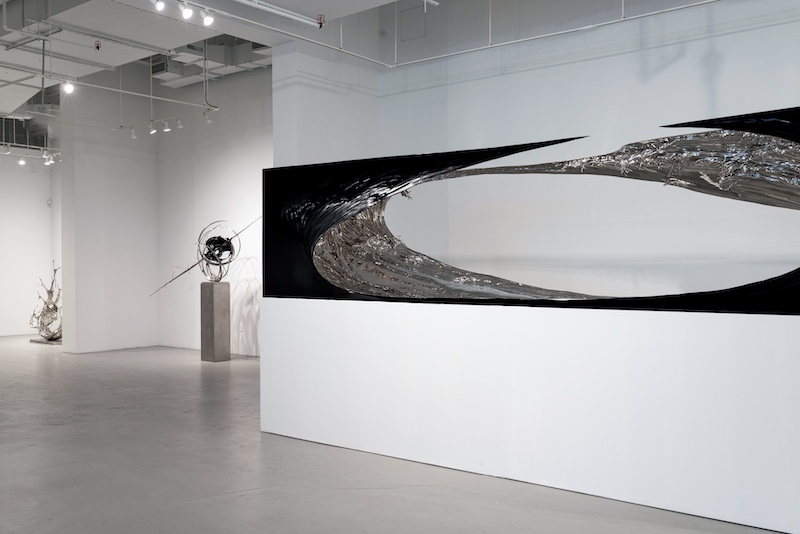
DP: Your “gravity-defying sculptures” have become a symbol of your work, is there an overarching theme that connects them to your previous exhibitions? Can you take me through the process of creating these sculptures?
ZL: The most meaningful concepts in early Chinese philosophy are often metaphorically derived from the natural world. Water, for example, is an important ontological metaphor. Zhuangzi, an ancient Chinese philosopher, likened water to a mirror. If we want to see our reflection in the water, it must be still, not flowing. This metaphor from nature conveys a philosophical perspective on how to navigate life.
These origins inspired me to develop the “Effusion” series in two forms. One form presents a hollowed-out structure, creating an interaction and conflict between sculpture and text. I incorporated the words from a poem called “Playing with Still Water” by the Tang dynasty poet Bai Juyi into the artwork. The text is cut from metal plates and then forged and welded into sculptures.
The sculptures use text as a tool of expression, going beyond the literal meaning of the words themselves. They represent an expansion, transfer, and recombination of textual information. The other form involves casting techniques, presenting solid mirror-like structures. By freezing the movement of water for a moment, these sculptures emphasize the stillness of gravity-defying art. With their mirrored surfaces, they enhance visual tension and create a sense of fluidity.
DP: Could you discuss your upcoming largest public sculpture in Hong Kong?
ZL: This year, I will install an “Effusion” sculpture in Hong Kong, measuring 7 meters in height and 8 meters in length—the largest public artwork I have completed in Hong Kong thus far. Once an artwork is installed, it must withstand the test of time, as it will continually be assessed by the public. I find this to be the most interesting aspect of public art: the work is just the surface completion, and its future has the potential to “grow.”
Also read: This Art Residency Space In Delhi Evolves In Harmony With Nature At This Architectural Gem
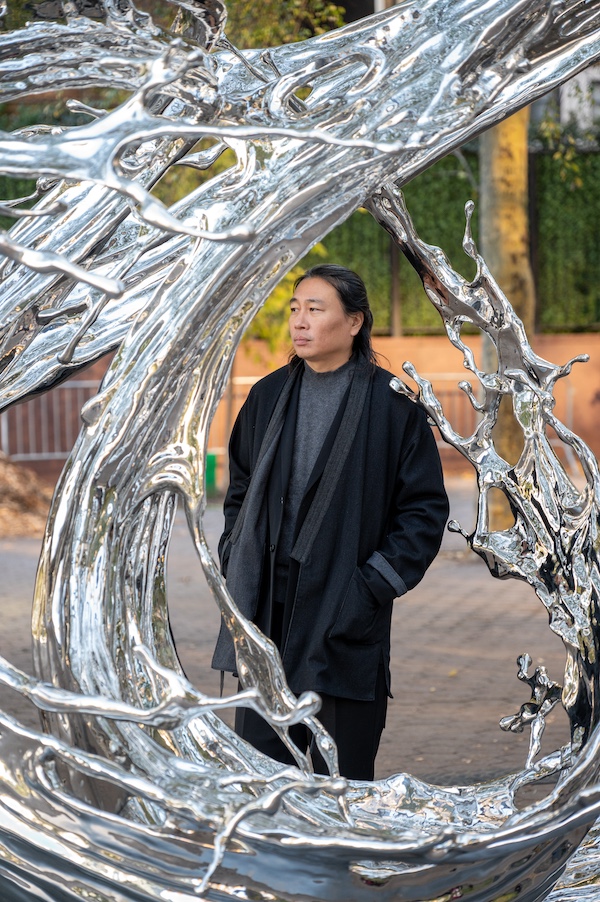
The language of art is universal and does not require translation. That is the greatness of art. I do not expect my works to influence anything, but each creation is sincere and comes from within, which is universal to all. Artist Portrait of Zheng Lu. (Image courtesy of Sundaram Tagore Gallery and artist)
DP: There are elements of world-building and context setting in your work, can you talk about some of your artistic influence?
ZL: During the opening of the sculpture exhibition at the United Nations Plaza, I said, “I am usually a person who doesn’t like to speak much, and today I speak in poor English. But I think it doesn’t matter because art can speak.” I have always adhered to this belief. The language of art is universal and does not require translation. That is the greatness of art. I do not expect my works to influence anything, but each creation is sincere and comes from within, which is universal to all.
DP: Has there been a significant difference in how people respond to your work in the US versus your home country? Has this impacted you or your work in any way?
ZL: In terms of sensory understanding of my works, I don’t feel there are significant differences. However, there are substantial differences in explicit or implicit feedback, which stems from the cultural differences between the East and the West. My personality is introverted, and I am an “I” person. However, my works are extroverted and embody the characteristics of an “E” person.
Also read: Renowned Gallerist Sundaram Tagore On Buying Art In A Virtual Art World
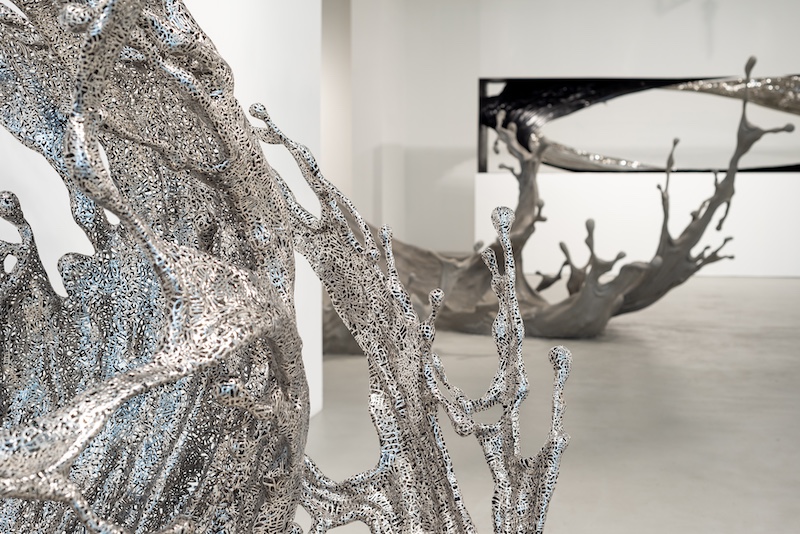
DP: What are you currently working on? Do you have any upcoming exhibitions or projects that you would like to share details about?
ZL: In my recent work, I have been experimenting with a method where humans and machines work in alternating sequences. Unlike traditional human-computer collaboration, this process is more like a relay race, where the artwork itself is the baton being passed between me and the computer. The final result is not entirely predictable, as it is shaped through this back-and-forth exchange.

